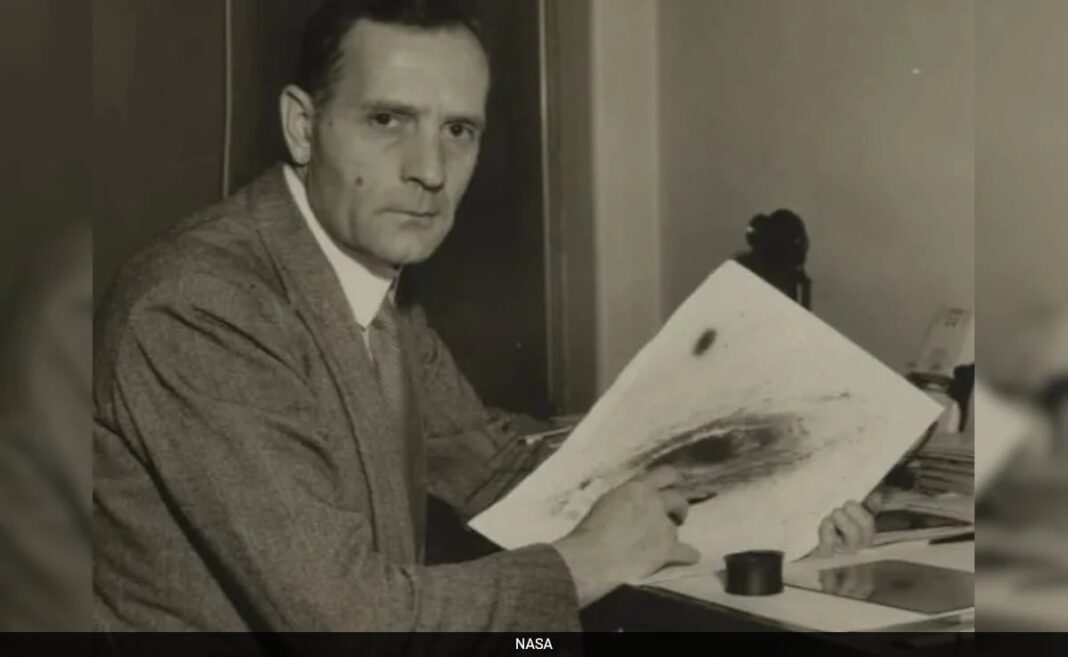[
]

NASA’s Hubble Space Telescope, launched into low Earth orbit in 1990, has been a vital instrument for exploring the universe for over three decades. Commonly referred to as HST or Hubble, the telescope is celebrated among space enthusiasts for its remarkable contributions to astronomy. However, many may not be aware that the telescope is named after Edwin Powell Hubble, a pioneering American astronomer. Edwin Hubble’s groundbreaking work in the early 20th century laid the foundation for modern cosmology, including the discovery of the universe’s expansion. His legacy lives on through this iconic instrument, which continues to provide a unique window to the universe.
According to NASA, like the Hubble Space Telescope, Edwin Hubble’s discoveries transformed the frontier of scientific knowledge. His work took us beyond the Milky Way and placed us in an ever-expanding universe with a myriad of galaxies beyond our own.
Who was Edwin Powell Hubble?
As per NASA, born on November 20, 1889, in Marshfield, Missouri, Hubble spent his youth honing athletic skills in basketball, football, baseball, track, and boxing, while mentally feeding his curiosity through science fiction novels. Hubble’s innate fascination with the world around him foretold a lifetime of exploration. He entered the University of Chicago in 1906 as an undergraduate, earning a bachelor’s degree in mathematics and astronomy. He briefly deviated from his path of exploration, largely fuelled by his father’s expectations, to study law at Oxford University as a Rhodes Scholar. But his deep longing to pursue a career in the sciences outweighed his father’s visions, and Hubble switched gears and obtained a Ph.D. in astronomy from the University of Chicago in 1914, setting his focus on the heavens.
The famous British astrophysicist Stephen Hawking wrote in his book A Brief History of Time that Hubble’s “discovery that the Universe is expanding was one of the great intellectual revolutions of the 20th century.”
Seeing the Cosmos Through a New Lens
Destined for the cosmos, Hubble’s journey led him to Mount Wilson Observatory in California and the 100-inch Hooker Telescope, the world’s largest at the time. Hubble used the 100-inch telescope to observe faint, fuzzy, cloud-like patches of light broadly labelled nebulae. His observations brought these fuzzy patches into focus and, in the process, transformed the field of cosmology.
Hubble used his uniquevantage point to compare galaxies with one another by studying their physical properties. Focusing on the visual appearances of galaxies, Hubble devised what is now the most influential system for classifying them: the Hubble Classification Scheme.
No Nobel Prize for an astronomer
According to esahubble.org, during his life, Hubble had tried to obtain the Nobel Prize, even hiring a publicity agent to promote his cause in the late 1940s, but all the effort was in vain as there was no category for astronomy. Hubble died in 1953 while preparing for several nights of observations, his last great ambition unfulfilled.
He would have been thrilled had he known that the Space Telescope is named after him, so that astronomers can continue to “hope to find something we had not expected”, as he said in 1948 during a BBC broadcast in London.


